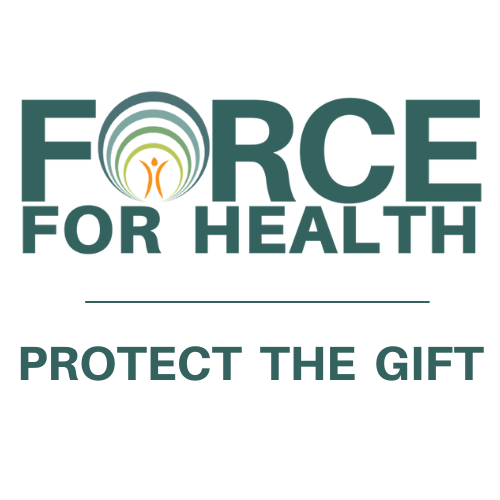Stress can happen for many reasons. Divorce. Abuse. Discrimination. Poverty.
But when the human body’s response to stressful situations is activated too frequently or intensely without supportive relationships, stress becomes more than “just stress.”
It becomes “toxic stress.”
And toxic stress can harm your brain, body, and behavior, and increase lifelong risk for disease, especially for Latinos and other people of color.
Fortunately, we can address and even prevent toxic stress.
The new Roadmap for Resilience: The California Surgeon General’s Report on Adverse Childhood Experiences, Toxic Stress, and Health is the nation’s first guide to address toxic stress by cutting a main cause─adverse childhood experiences (ACEs)─in half in a generation.
Our team at Salud America! is exploring this roadmap in an 11-part series.
1. Toxic Stress and its Lifelong Health Consequences
Toxic stress, which is brought about by repeated stressful or traumatic experiences with no supportive relationships, is causing serious social, behavioral, and health problems for people across the nation.
Health experts are even calling toxic stress a public health crisis.
“Too much stress or inefficient operation of the acute responses to stress can cause wear and tear and exacerbate disease processes,” according to the Encyclopedia of Stress.
Read more on Jan. 21, 2021!
2. We Need to Recognize Toxic Stress as a Health Condition with Clinical Implications
Toxic stress response is strongly linked to some of the most serious health and social conditions facing our society.
Yet toxic stress is not recognized as a health condition with clinical implications. There is no diagnostic entity that describes the pervasive effects of toxic stress on child development and lifelong health.
Health experts are pushing to elevate toxic stress and developmental trauma on national research and policy agendas.
Read more on Jan. 25, 2021!
3. 3 Types of Public Health Prevention Interventions to Cut Toxic Stress
Similar to preventing a chronic disease like diabetes, preventing toxic stress requires a three-level public health intervention approach.
Primary prevention focuses on upstream efforts and policies with a goal of preventing harmful exposures and behaviors from ever occurring.
Secondary prevention is early detection, like screening to identify risk factors and/or diseases before the onset of signs and symptoms.
Tertiary prevention is early intervention for people who have already developed a disease or social outcome.
How can this three-level approach prevent toxic stress? What sectors can help? What interventions are needed?
Read more on Jan. 28, 2021!
4. How to Use Healthcare Strategies to Address Toxic Stress
Healthcare settings are critical to address toxic stress.
In clinics, hospitals, nursing homes, and home healthcare, workers can provide universal trauma-informed care, patient education, anticipatory guidance, linkages to cross-sector partners, and advocacy for trauma-informed systems and effective referral networks.
Screening in these settings can enable more effective referrals, guidance, and support around preventing and addressing cumulative risk for toxic stress.
Read more on Feb. 1, 2021!
5. Using Public Health Strategies to Address Toxic Stress
The mission of the public health sector is simple.
Promote health. Prevent disease before it happens. Mitigate health consequences if disease does strike.
When it comes to ACEs and resulting toxic stress, the public health sector can play a critical role by strengthening economic support, positive family relationships, and social services. Public health leaders also must investigate, assess, and monitor risk and protective factors of toxic stress to inform policy, program, and practice decisions at all prevention levels.
Read more on Feb. 4, 2021!
6. How to Use Social Service Strategies to Address Toxic Stress
Poverty, unaddressed mental health challenges of caregivers, substance use, and a parental history of child abuse are major drivers of child welfare involvement and toxic stress.
By addressing these factors, the social service sector can prevent abuse and neglect before they occur.
This means increasing social connections, public support for a shared community future, trauma-informed training for social service workers. But it also calls for family-friendly workplaces─like paid family leave and on-site childcare─as well as home visiting programs.
Read more on Feb. 8, 2021!
7. Toxic Stress in Early Childhood and How to Address It
Early childhood is a key time for preventing ACEs and toxic stress.
This is why all early childhood care workers need trauma-informed training. And this is why early child care settings need policies and programs that promote safe, stable, nurturing early relationships and environments and that increase access to high-quality child care, home visitation services, and other support services.
Read more on Feb. 11, 2021!
8. Toxic Stress in Education and How to Address It
ACEs and toxic stress can hinder a person’s learning and school success.
Trauma-informed training for all school staff─to include the impacts of toxic stress, and risk factors and protective factors for toxic stress─and a team-based approach are important to support students.
Promoting a calm and nurturing school environment, implementing restorative discipline practices, and providing school-based mental and physical health services can support all students, particularly those at risk of toxic stress.
Read more on Feb. 15, 2021!
9. Applying a Justice Approach to Address Toxic Stress
Encounters with police are “intrinsically stressful and potentially traumatic,” especially for youth of color and those who experience trauma.
Preventing ACEs and entry into the justice system, reducing the “school-to-prison” pipeline, limiting zero-tolerance policies, implementing restorative justice practices, ending mandatory minimum sentences, and increasing police accountability are important goals for the justice sector.
The justice sector can also provide trauma-informed training for all related personnel and support access to preventive healthcare and resources.
Read more on Feb. 18, 2021!
10. California’s Epic Response to Toxic Stress and ACEs
California is already leading the nation in addressing ACEs.
The state became the first to screen children for ACEs by allocating $143 million to train Medi-Cal providers and reimburse providers for screening. They also surveyed local and state agencies to assess how they are addressing ACEs.
Now their roadmap is making new inroads to address toxic stress.
Read more on Feb. 22, 2021!
11. Let’s Make 2011 the Year of Health Toxic Stress
You can take action to address toxic stress.
Start by sharing California’s new Roadmap for Resilience.
But much more action will be needed, especially in light of the COVID-19 pandemic, which is disproportionately impacting Latinos and other people of color.
“We believe that the pandemic is proving to be a significant risk factor for toxic stress, both by increasing ACEs, such as intimate partner violence and substance dependence, and also by limiting access to the buffering relationships that we know are healing,” said Dr. Nadine Burke Harris, California Surgeon General and author of the roadmap. “Add to that the economic hardship so many are experiencing, plus the vicarious trauma of witnessing racial injustice, and we recognize that there is a dramatically increased risk of toxic stress for this generation.”
Take action on Feb. 25, 2021!
The post 11 Crucial Insights from the First Roadmap to Address Toxic Stress appeared first on Salud America.






